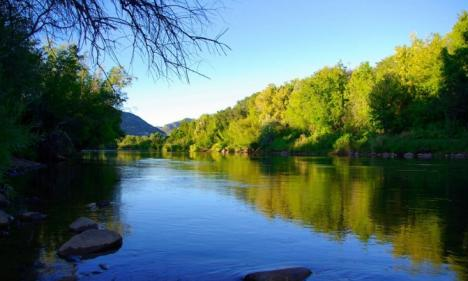A River Runs Orange
By Carlos Pelaéz, Co-founder of Blueprint Earth
Last week’s toxic spill on the Animas River was instantly, shockingly visible, but what will we see of the long-term consequences? Most importantly, what can we do about them right now?
Since last week, the media has been closely following the cleanup of a 3-million-gallon toxic spill that turned the Animas River in Colorado orange. Toxic wastewater that could fill a pool the size of three football fields contaminated a pristine area. As reported in The Atlantic, “The spill sent lead, arsenic, cadmium, and other contaminants into the 126-mile-long river…” CNN reported that heavy metals flowing into the river were mainly iron, zinc and copper from the Gold King Mine, where the Environmental Protection Agency accidentally broke into a dam, causing the spill.
This kind of damage is a concern for all of us as we consider the effects on our health and environment. What is going to happen to the river? Is this going to make our drinking water toxic? How do we begin to clean up such a devastating spill?
Here, we see the Animas River in all its pristine glory. Will we be able to recapture that, and what will it take?
Such big questions don’t typically filter through our daily thoughts. We spend a lot of time thinking about the latest mobile phone we want to buy or the latest movie we want to watch. These are all goods that we pay for and enjoy. But what about the other types of goods, like the air and water? Such goods are called “common goods” (for all you economics majors out there), because they are designed for all of us to enjoy.
Who monitors or oversees the activity in that river? Whose responsibility is it?
As consumers, we mainly focus on the tangible goods that we can buy. We like to see features and benefits. We want to fulfill our needs and wants. Sure, that’s human nature. But we often overlook the bigger picture of common goods.
We think someone else will fix the water and the air we need to survive. We might believe it is the government’s job to keep our rivers clean. Or perhaps we think it’s the job of mining companies, even though they closed down dozens of years ago.
If we only think about what we want to buy and forget about what we need to survive, we will not invest in protecting the water, air, and environment. You cannot pay for the water you need when we have turned it orange!
I saw the orange river on the news and wondered if someone took the time to blueprint the ecosystem. Did someone study the grass, water quality, insects, fish, rock, and air quality of the river? I wondered if anyone had truly considered the common good the river provides and if we had established a baseline for its health and longevity, understanding its deep impacts on human life and the environment.
If we had a baseline, we could better understand how this toxic spill will affect the river—not just today with its bright orange hue, but in the future. If we had a blueprint of the river before the incident, we could understand how to help repair it. We could better understand the implications of the toxic spill.
Blueprint Earth is blueprinting the Mojave Desert for exactly this reason. We are learning how to capture a snapshot of the environment to understand how it works.
We know that it isn’t feasible to wait, hoping that the government, a corporation, or someone else will do this.
At Blueprint Earth, we think about the common good. Our goal is to take the initiative to look after our environment.
In waiting for someone else to be responsible, we are passing the cost of our common goods onto future generations. When all rivers run orange, we will not wonder who to blame.


